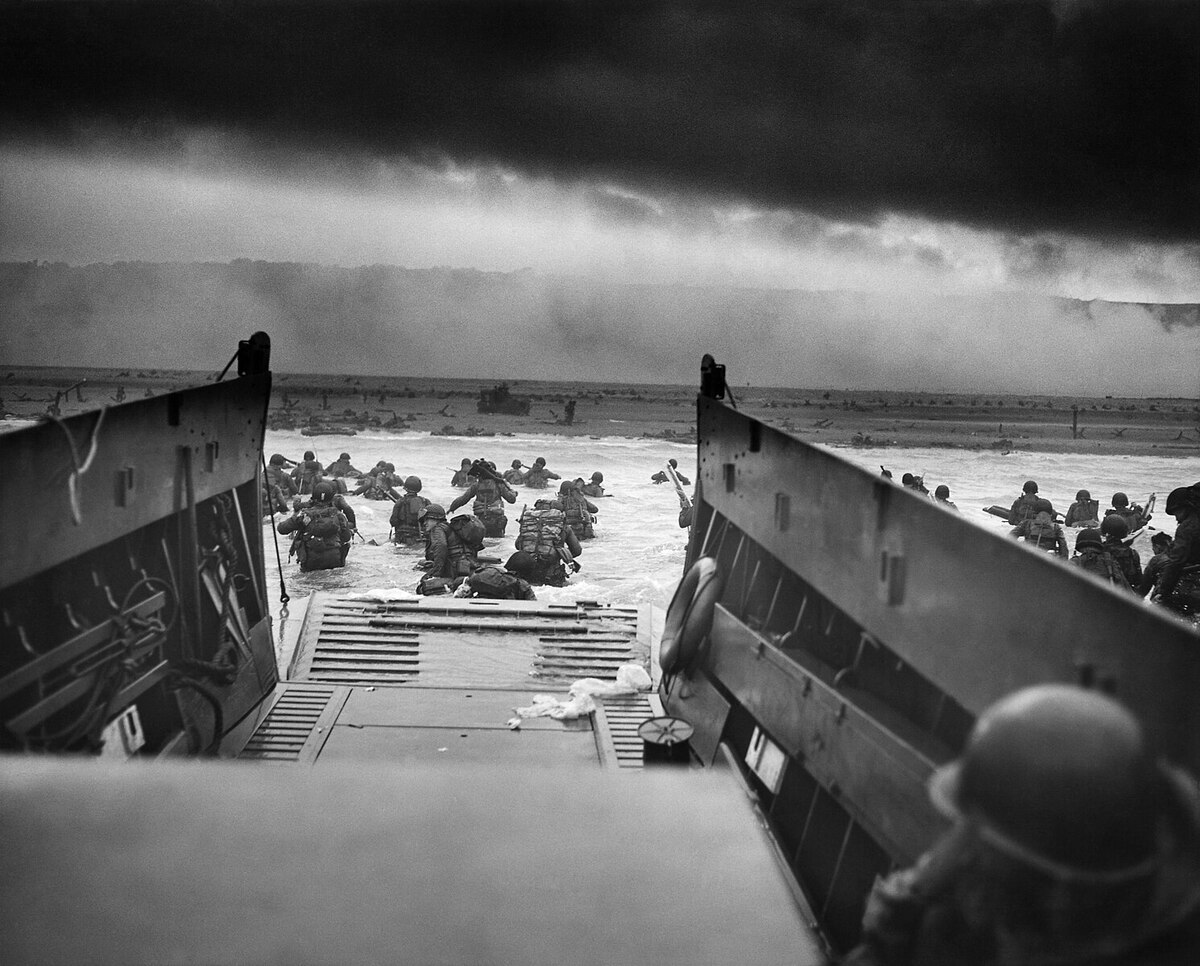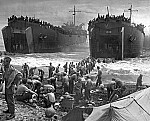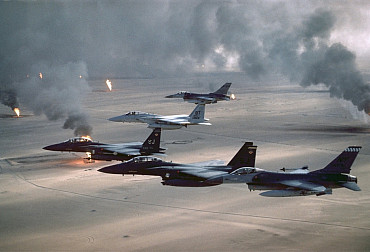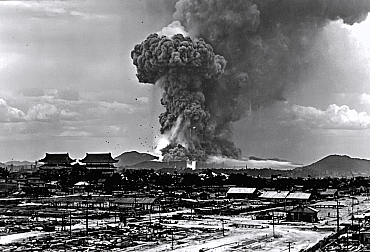D-Day: The day that turned the tide – remembering June 6, 1944
June 6, 1944—a date etched into the annals of history. Known simply as D-Day, it was the start of Operation Overlord, the Allied invasion of Normandy, France, and the largest amphibious assault ever conducted. But beneath the surface of this widely remembered military operation lie lesser-known stories, unsung innovations, and strategic gambits that made this turning point of World War II both extraordinary and brutal.

The Massive Deception that Made D-Day Possible
One of the most overlooked elements of D-Day is the sophisticated web of deception known as Operation Bodyguard, a set of diversionary operations meant to mislead the German High Command.
The most famous sub-operation, Operation Fortitude, convinced the Germans that the main Allied invasion would come at Pas-de-Calais, not Normandy. To sell the lie:
-
The Allies created a fake First U.S. Army Group (FUSAG), led on paper by the legendary General George S. Patton.
-
Inflatable tanks, wooden aircraft, and scripted radio traffic created the illusion of a massive army ready to strike Calais.
-
German double agents, such as Juan Pujol García ("Garbo"), fed the Nazis false intelligence, which the Abwehr considered credible.
Even weeks after the Normandy landings, Hitler kept Panzer divisions stationed in Calais, expecting a “second, real” invasion.
The Role of Weather and the Decision to Delay
Originally set for June 5, the invasion was postponed due to poor weather. But a relatively unknown British meteorologist, Group Captain James Stagg, predicted a small 24-hour window of clear skies on June 6. Eisenhower trusted him—and made the call.
This decision was crucial. The Germans had not anticipated an invasion in bad weather. Field Marshal Erwin Rommel, Germany’s top commander in France, had even left for Germany to visit his wife on her birthday, believing no attack was imminent. Many key German commanders were similarly absent from their posts.
"Hobart's Funnies": The Engineering Marvels of D-Day
The British brought with them some unusual armored vehicles, many developed by Major General Percy Hobart. Known as "Hobart’s Funnies," these specialized tanks included:
-
Crocodile tanks – flamethrower-equipped Churchill tanks for clearing bunkers.
-
AVREs (Armoured Vehicle Royal Engineers) – tanks armed with petard mortars to destroy concrete obstacles.
-
Bobbin tanks – which unrolled reinforced matting over soft beach sand to allow other vehicles to drive over it.
-
Swimming Sherman DD tanks – amphibious Shermans with flotation screens and propellers.
These innovations played a crucial but often forgotten role in the success of the landings, particularly on Gold and Juno beaches.
Behind Enemy Lines: The Airborne Gamble
The night before the landings, over 24,000 paratroopers and glider troops from the U.S. 82nd and 101st Airborne and the British 6th Airborne Division were dropped behind enemy lines.
But the drops were chaotic:
-
Many units landed miles off-course due to anti-aircraft fire and poor navigation.
-
Some American troops drowned in flooded fields—intentionally flooded by the Germans as a defensive measure.
-
Others, like those from the British Pegasus Bridge assault, executed precise glider landings under moonlight, seizing vital river crossings within minutes.
Despite the chaos, these airborne troops disrupted German communications, captured key bridges, and slowed enemy reinforcements.
The French Resistance’s Hidden Contribution
French Resistance fighters played an underappreciated but essential role. In coordination with the British Special Operations Executive (SOE) and Allied command, they:
-
Sabotaged rail lines, delaying German troop movements.
-
Attacked communication hubs and supply depots.
-
Provided intelligence on German troop positions and terrain.
On June 6 alone, resistance cells carried out over 1,000 acts of sabotage. In some cases, entire German convoys were ambushed or delayed for days.
Naval Gunfire and Undersea Minesweepers
While much focus is placed on the infantry landings, the naval aspect of D-Day was colossal. Over 6,000 vesselsparticipated, including:
-
Destroyers and cruisers providing direct fire support for troops under fire (the USS Frankford famously sailed within 1,000 yards of Omaha Beach to blast enemy emplacements).
-
Minesweepers cleared paths through German minefields, often under fire and with little armor.
In the lead-up to D-Day, X-Class British midget submarines planted navigational beacons off the coast—tiny subs crewed by four men, operating in freezing waters for days.
The Aftermath: Holding the Beachhead Was Just the Beginning
Contrary to popular belief, success on D-Day did not guarantee victory in Normandy. The Allies had to fight for weeksto break out of the beachhead. The Battle of Caen, for example, lasted over a month and resulted in massive casualties.
German defenders, including elite SS Panzer divisions, mounted fierce counterattacks. Urban combat, bocage (hedgerow) fighting, and strategic blunders by Allied commanders turned Normandy into a grinding war of attrition.
Civilians in the Crossfire
Tens of thousands of French civilians were caught in the fighting. Allied bombing raids to disrupt German movements often hit villages and towns. Civilian casualties in Normandy from June to August 1944 are estimated at over 20,000.
This tragic toll is often forgotten but is part of the cost of liberation.
Commemoration and Modern Relevance
Today, D-Day is more than a day of remembrance—it’s a lesson in coalition warfare, logistics, and the human cost of freedom. It continues to be studied by military academies worldwide as a case study in:
-
Joint operations
-
Deception strategy
-
Amphibious warfare
-
Civil-military coordination
But perhaps most importantly, it serves as a reminder of what’s possible when nations unite against tyranny.
Conclusion: D-Day’s Enduring Legacy
Behind every beach and hedgerow of Normandy lies a story. Not just of tanks and tactics, but of human grit, sacrifice, and ingenuity. D-Day was not just the beginning of the end for Nazi Germany—it was a defining moment in world history.
As we commemorate June 6, we must look beyond the headlines and well-known images. Let us remember the meteorologists who changed history, the French saboteurs in the shadows, the paratroopers lost in fog and flak, and the engineers who built floating harbors and fake armies.
D-Day was not just won on the beaches—it was won in the shadows, in the sky, and in the minds of men who dared to defy the odds.







